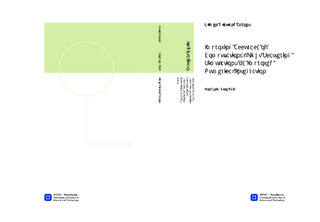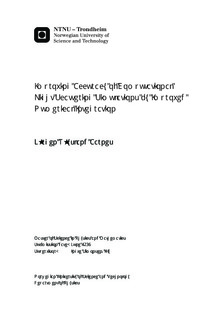| dc.description.abstract | Numerical integration plays an important role in many large scale physics simulations, yet the accuracy of such computations are often overlooked when the integrator routine is implemented---if the integration result itself is not a part of the simulation output. Errors from inaccurately computed integrals may propagate through the computations and severely impact the final result.The aim of this thesis is to improve the accuracy of the numerical approximations of two classes of integrals. These integrals are computed in large numbers in a Maxwell Eqs. solver---developed to study light scattering from randomly rough surfaces. Previously, they have been computed with a midpoint rule, a crude, yet efficient integration scheme.An automatic integrator based on the Gauss-Patterson nested quadrature scheme has been developed. The particular quadrature was chosen to minimize the number of function evaluations needed to reach a requested accuracy. The integrator routine performed well for general-purpose integration, but was deemed inefficient when studied in detail for the two classes of integrals from the Maxwell Eqs. solver. This was mainly due to the accuracy of the integrator being limited by an inaccurate surface representation used in the integrand functions' argument, related to a coarse discretization in the light scattering system. A more appropriate integrator was a Gauss-Patterson based rule evaluation quadrature routine. This routine approximates an integral using either three of seven function evaluations, regardless of the complexity of the computed integral. The accuracy of the computed integrals was improved by several orders of magnitude, when computed with the rule evaluation routine rather than the midpoint rule---with a modest increase in the number of function evaluations, from one to three or seven. When a measure of energy conservation was used to study the impact of the rule evaluation routine incorporated in the Maxwell Eqs. solver, however, the expected accuracy improvement was not reached. This may be due to the energy conservation measure not being an appropriate accuracy measure in the simulations. The computational time increase, on the other hand, was less than expected, with an average factor of 1.54 for single precision and 2.77 for double precision computations. | nb_NO |

